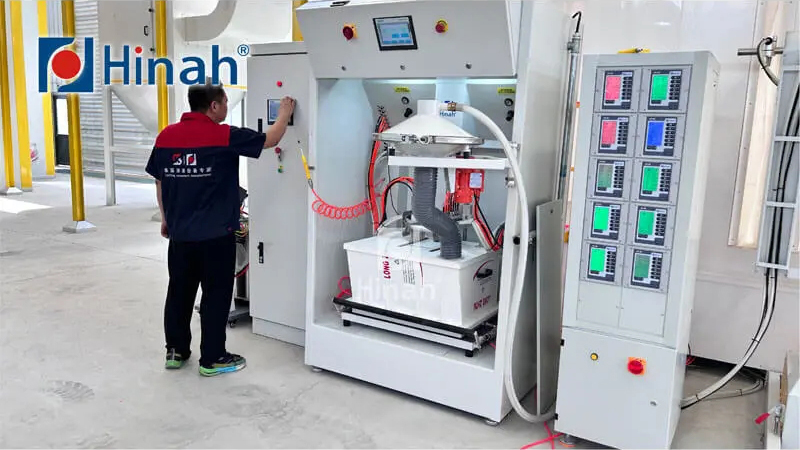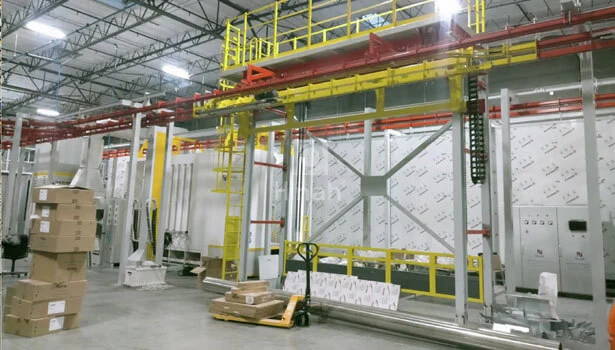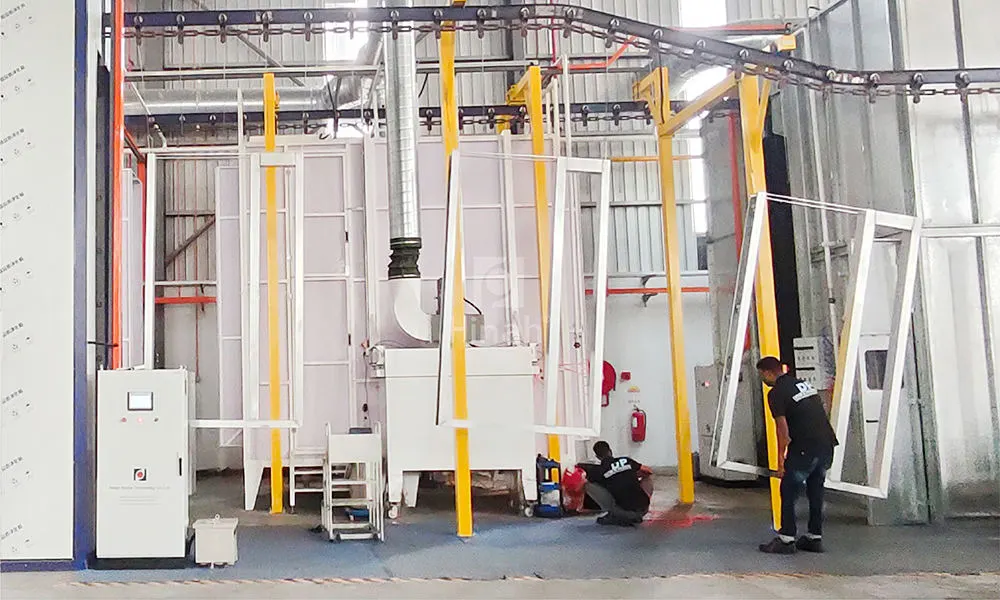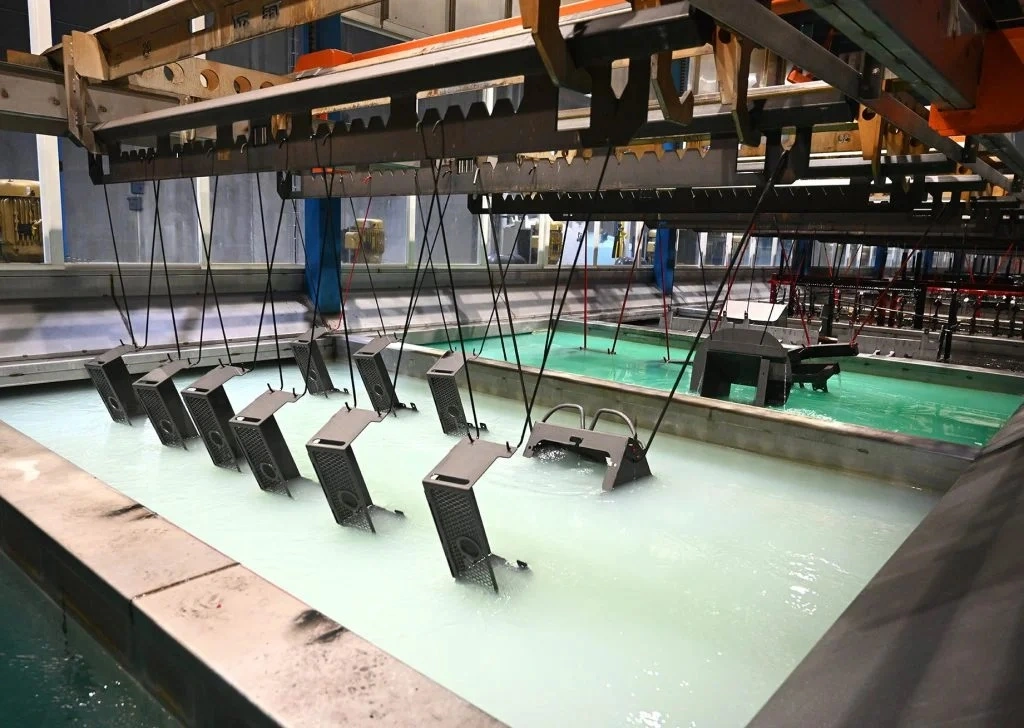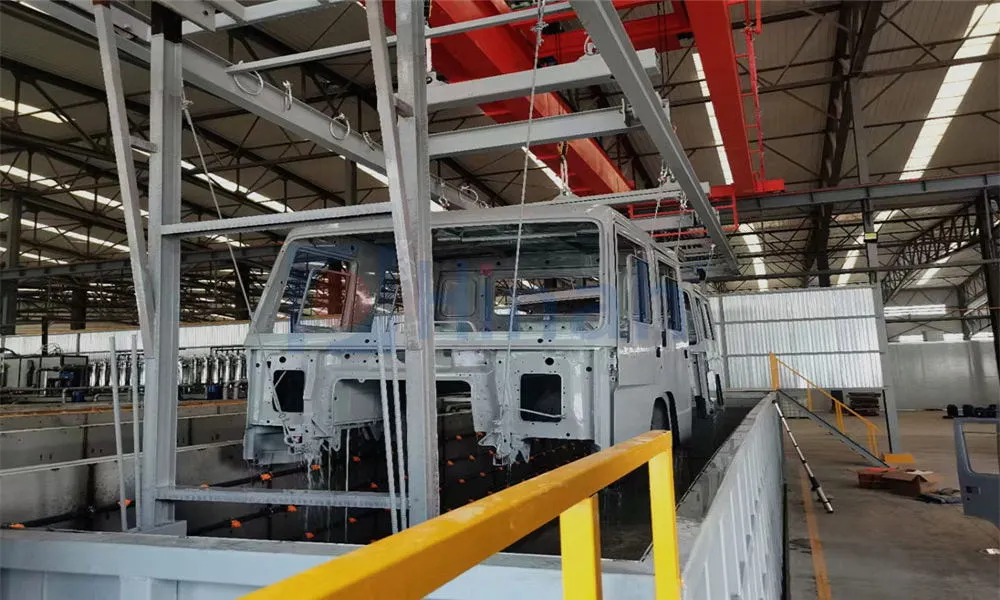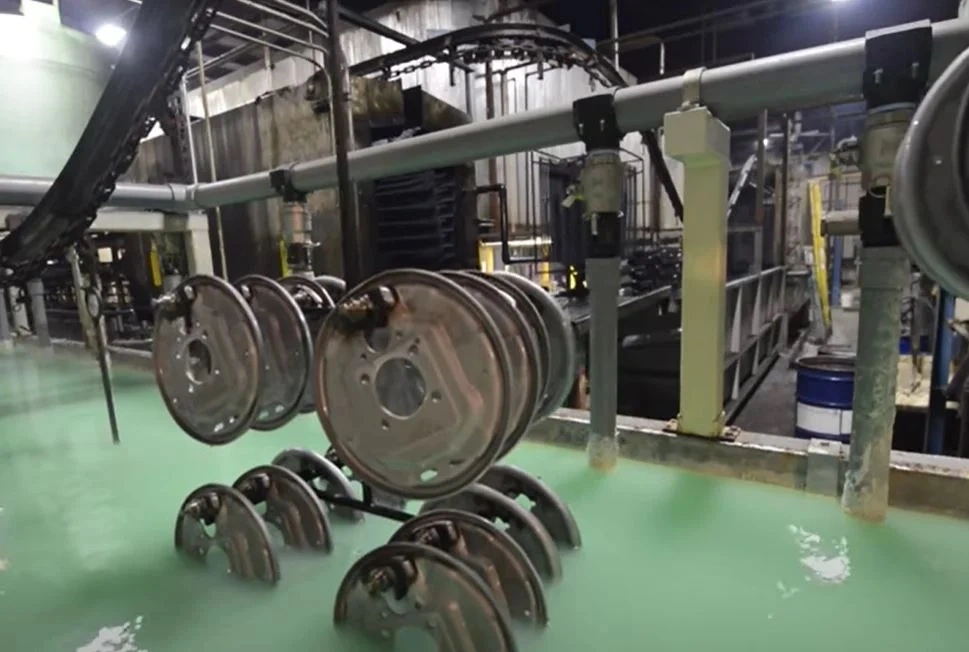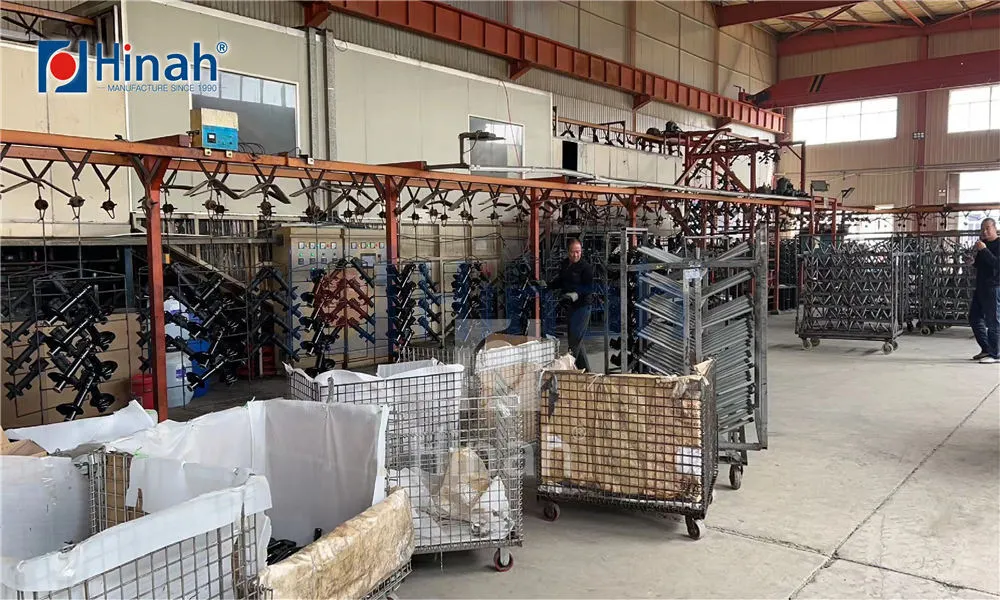In today's industrial and manufacturing landscapes, achieving high-quality, durable finishes on various surfaces is crucial for product longevity and aesthetic appeal. One technology that stands out in this realm is the powder coating system. This innovative finishing method has gained widespread adoption due to its efficiency, environmental benefits, and superior results compared to traditional liquid coatings. A powder coating system involves applying a dry powder to a surface, which is then cured under heat to form a hard, protective layer. Unlike conventional painting, it eliminates the need for solvents, reducing volatile organic compound (VOC) emissions and waste. This article delves into the powder coating system from multiple angles, providing a detailed exploration of its mechanics, advantages, applications, types, environmental impact, and operational considerations. By understanding these facets, businesses and individuals can make informed decisions about integrating this system into their processes, ensuring enhanced performance and sustainability.

What is a Powder Coating System?
A powder coating system is a dry finishing process that has revolutionized surface treatment across various industries. At its core, it involves the application of a finely ground mixture of pigments, resins, and additives in powder form to a substrate, typically metal. This powder is electrostatically charged and sprayed onto the surface, where it adheres due to the charge difference. The coated object is then placed in a curing oven, where the powder melts and flows into a smooth, uniform film. Upon cooling, it hardens into a durable, high-quality finish that resists chipping, scratching, fading, and corrosion. The powder coating system is highly versatile, accommodating a wide range of colors, textures, and thicknesses, making it suitable for everything from automotive parts to household appliances. Its popularity stems from its ability to deliver consistent results with minimal waste, as any overspray can often be recycled. Compared to wet paint systems, a powder coating system reduces environmental hazards and operational costs, positioning it as a preferred choice for modern manufacturing and refurbishment projects.
The components of a typical powder coating system include a pre-treatment stage for cleaning and preparing the surface, an application booth with electrostatic spray guns, a recovery system to collect excess powder, and a curing oven. This integrated approach ensures that each step is optimized for efficiency and quality control. As industries increasingly prioritize sustainability and durability, the powder coating system continues to evolve, incorporating advanced technologies like automated robotics and low-temperature curing options. Understanding the fundamentals of this system is the first step toward leveraging its full potential in various applications.
How Does a Powder Coating System Work?
The operation of a powder coating system is a multi-stage process designed to ensure optimal adhesion and finish quality. It begins with surface preparation, which is critical for the success of the coating. This stage involves cleaning the substrate to remove oils, dirt, and rust, followed by pre-treatment processes such as phosphating or chromating to enhance corrosion resistance and promote powder adhesion. Without proper preparation, the powder may not adhere correctly, leading to defects like peeling or blistering.
Next, the application phase takes place in a controlled environment, often a spray booth. Here, the powder is fluidized in a hopper and delivered to an electrostatic spray gun. The gun imparts an electrostatic charge to the powder particles, which are then directed toward the grounded workpiece. Due to the opposite charges, the powder particles adhere evenly to the surface, covering complex shapes and edges with precision. This electrostatic attraction minimizes overspray and allows for uniform coverage, even in hard-to-reach areas. A key advantage of the powder coating system is its efficiency; any powder that does not adhere can be collected via a recovery system, filtered, and reused, reducing material waste significantly.
After application, the coated object moves to the curing stage. It is transferred to a curing oven, where it is heated to a specific temperature, typically between 150°C and 200°C (300°F to 400°F). The heat causes the powder to melt, flow, and cross-link chemically, forming a continuous film that bonds securely to the substrate. The curing time and temperature depend on the powder formulation and the material being coated. Once cured, the object cools, resulting in a tough, resilient finish that provides excellent protection against environmental factors. This entire process in a powder coating system is often automated for consistency, making it scalable for high-volume production while maintaining high quality standards.
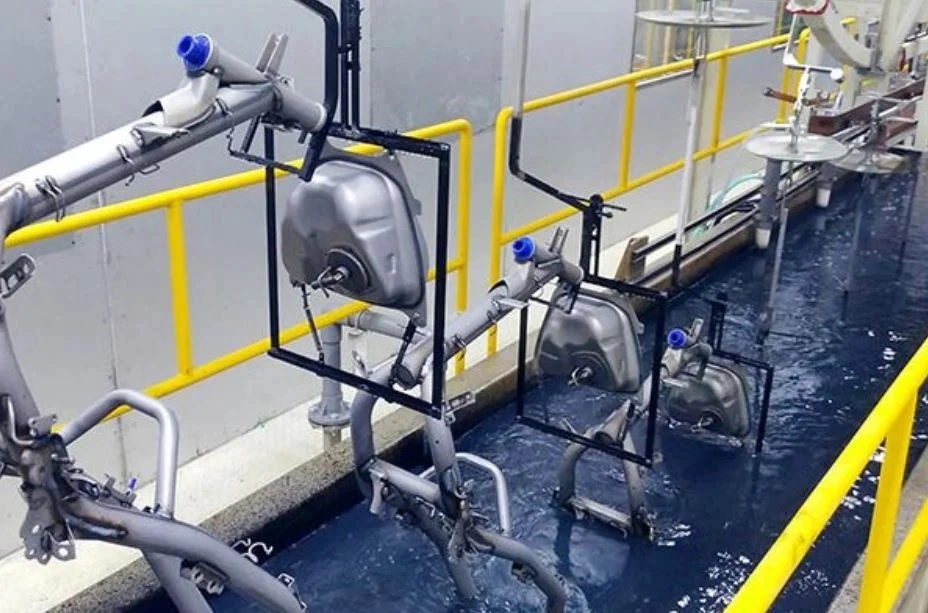
Key Advantages of Using a Powder Coating System
The powder coating system offers numerous benefits that make it a superior choice over traditional liquid coatings. One of the most significant advantages is its durability. The cured finish is highly resistant to impact, moisture, chemicals, and UV radiation, ensuring that coated products maintain their appearance and functionality over time. This makes the powder coating system ideal for outdoor equipment, automotive components, and architectural structures exposed to harsh conditions.
Another major benefit is environmental friendliness. Unlike solvent-based paints, a powder coating system produces minimal VOCs, which are harmful pollutants. The absence of solvents means reduced air pollution and lower health risks for operators. Additionally, the efficiency of material usage is remarkable; overspray can be recycled, leading to nearly 100% utilization of the powder. This not only cuts down on waste but also lowers overall costs, as less material is needed compared to liquid coatings. The powder coating system also eliminates the need for hazardous waste disposal associated with solvents, aligning with global sustainability goals.
From an economic perspective, the powder coating system reduces operational expenses through faster application and curing times. It often requires fewer coats than liquid paint, streamlining the production process. The finish is typically thicker and more uniform in a single application, reducing labor and energy costs. Moreover, the powder coating system enhances workplace safety by minimizing fire hazards and exposure to toxic chemicals. Aesthetically, it provides a wide range of colors, textures, and finishes—from matte to high-gloss—allowing for customization to meet specific design requirements. These advantages collectively make the powder coating system a cost-effective, eco-friendly, and high-performance solution for various industries.
Common Applications of Powder Coating Systems
The versatility of the powder coating system has led to its adoption across a diverse array of industries. In the automotive sector, it is used for coating wheels, chassis, engine parts, and trim components due to its ability to withstand extreme temperatures and corrosive environments. The durability and aesthetic appeal of the powder coating system help vehicles maintain their look and integrity over years of use. Similarly, in the appliance industry, products like refrigerators, washing machines, and ovens benefit from the resistant finishes that prevent scratches and stains, ensuring longevity and consumer satisfaction.
Architectural and construction applications also heavily rely on the powder coating system. It is employed for coating aluminum extrusions, window frames, fencing, and structural steel. The system's resistance to fading, chalking, and corrosion makes it suitable for both interior and exterior use, even in coastal areas with high salt exposure. Additionally, the powder coating system is popular in furniture manufacturing, where it provides durable and attractive finishes for office chairs, tables, and outdoor furniture. The ability to achieve custom colors and textures allows designers to meet aesthetic demands without compromising on performance.
Other notable applications include the coating of electrical enclosures, agricultural equipment, and sporting goods. In each case, the powder coating system delivers consistent quality and protection. For instance, in the electronics industry, it insulates and shields components from moisture and dust. The agricultural sector uses it to protect machinery from wear and tear in demanding environments. As technology advances, the powder coating system is expanding into new areas, such as medical devices and aerospace components, where precision and reliability are paramount. This broad applicability underscores the system's adaptability and effectiveness in meeting the needs of modern manufacturing.
Types of Powder Coating Systems Available
Powder coating systems come in various types to suit different production requirements and environments. The two primary categories are thermoset and thermoplastic powder coatings. Thermoset powders, the most common type used in industrial applications, undergo a chemical cross-linking reaction during curing that makes the finish heat-resistant and durable. These are ideal for high-temperature applications and provide excellent mechanical properties. In contrast, thermoplastic powders do not cross-link; they simply melt and solidify upon cooling, making them reusable and suitable for applications requiring flexibility, such as wire coatings.
Another classification is based on the application method and system setup. For instance, there are manual powder coating systems, where operators handle the spray guns, offering flexibility for custom or low-volume jobs. Automated powder coating systems, on the other hand, use robotics and conveyor systems for high-volume production, ensuring consistency and efficiency. These systems can be integrated with advanced controls for precise application, reducing human error. Additionally, powder coating systems can be designed as batch ovens for small-scale operations or continuous lines for large-scale manufacturing, allowing businesses to scale their operations as needed.
Environmental and operational considerations also influence the choice of powder coating system. For example, some systems incorporate infrared curing for faster processing times and energy savings. Others may use low-temperature powders for heat-sensitive substrates like wood or plastics. The type of powder—such as epoxy, polyester, or hybrid—also affects the system's performance, with each offering specific benefits like weather resistance or chemical stability. By selecting the appropriate powder coating system, users can optimize their processes for quality, speed, and cost-effectiveness, tailored to their unique needs.
Environmental Impact and Benefits of Powder Coating Systems
The powder coating system is widely recognized for its positive environmental profile compared to traditional coating methods. One of the standout benefits is the reduction in VOC emissions. Since powder coatings contain no solvents, they do not release harmful VOCs into the atmosphere during application or curing. This aligns with stringent environmental regulations and contributes to cleaner air quality. Moreover, the powder coating system minimizes waste through its high transfer efficiency; oversprayed powder can be collected and reused, resulting in nearly zero waste generation. This circular approach reduces the need for raw materials and lowers the carbon footprint of coating operations.
Energy efficiency is another advantage of the powder coating system. Modern systems often feature optimized curing ovens that consume less energy than those used for liquid coatings, as powder typically cures at lower temperatures and for shorter durations. Additionally, the elimination of solvent evaporation reduces the energy required for ventilation and air purification. Many powder coating systems are designed with sustainability in mind, incorporating features like heat recovery and low-emission technologies. This not only cuts operational costs but also supports corporate sustainability initiatives.
From a lifecycle perspective, products coated with a powder coating system tend to have longer service lives due to the durability of the finish, reducing the frequency of recoating and resource consumption. The powders themselves are often free of heavy metals and other hazardous substances, making them safer for disposal and recycling. As industries move toward greener practices, the powder coating system serves as a model for eco-friendly manufacturing. By adopting this system, companies can enhance their environmental stewardship while maintaining high performance standards, making it a win-win solution for business and the planet.
Operational Considerations for Implementing a Powder Coating System
Implementing a powder coating system requires careful planning to ensure optimal performance and return on investment. Key considerations include facility layout, equipment selection, and operator training. The physical space must accommodate the pre-treatment, application, and curing stages, with adequate ventilation and safety measures. For instance, the spray booth should be designed to contain powder particles and facilitate efficient recovery, while the curing oven must have precise temperature controls to avoid defects like yellowing or under-curing.
Equipment choice is critical and depends on production volume, part size, and coating requirements. A powder coating system can range from simple manual setups to fully automated lines with robotic arms. Factors such as gun type (e.g., corona or triboelectric), powder feed system, and recovery unit efficiency should be evaluated. Regular maintenance is essential to prevent downtime; this includes cleaning filters, inspecting guns, and calibrating ovens. Additionally, selecting the right powder formulation—based on substrate material, desired finish, and environmental conditions—is vital for achieving the best results.
Operator training and safety protocols are equally important in a powder coating system. Personnel must be educated on electrostatic principles, application techniques, and hazard management, such as avoiding inhalation of powder particles. While powder coatings are generally safer than solvents, proper personal protective equipment (PPE) like respirators and gloves is necessary. Implementing a powder coating system also involves compliance with local regulations regarding emissions and waste disposal. By addressing these operational aspects, businesses can maximize the efficiency, safety, and longevity of their powder coating system, ensuring consistent high-quality finishes.
In conclusion, the powder coating system represents a advanced and sustainable approach to surface finishing, offering durability, efficiency, and environmental benefits. From its fundamental workings to diverse applications and types, this system has proven its value across industries. By understanding the key aspects outlined—what it is, how it works, its advantages, applications, types, environmental impact, and operational considerations—users can harness the full potential of powder coating technology. As innovation continues, the powder coating system is poised to become even more integral to modern manufacturing, driving quality and sustainability forward.
Frequently Asked Questions About Powder Coating System
Q1: What is the typical lifespan of a powder coating finish?
A1: A powder coating finish can last anywhere from 15 to 20 years or more, depending on environmental conditions and the quality of application. The powder coating system produces a durable layer that resists UV rays, moisture, and physical abrasion, making it ideal for outdoor and high-traffic applications. Proper surface preparation and curing in the powder coating system are crucial for maximizing longevity.
Q2: Can powder coating be applied to non-metal surfaces?
A2: Yes, with advancements in technology, the powder coating system can be used on certain non-metal surfaces like wood, plastic, and composites. However, this requires specialized powders and low-temperature curing processes to prevent damage to heat-sensitive materials. It's essential to consult with powder coating system experts to determine suitability for specific substrates.
Q3: How does a powder coating system compare in cost to liquid painting?
A3: Initially, a powder coating system may have higher setup costs due to equipment investment, but it often proves more cost-effective over time. The powder coating system reduces material waste, lowers energy consumption, and requires fewer coats, leading to savings on labor and maintenance. Additionally, the durability of powder coatings means less frequent recoating, further enhancing cost efficiency.
Q4: Is a powder coating system safe for indoor use?
A4: Yes, a powder coating system can be used indoors with proper ventilation and safety measures. Since powder coatings contain no solvents, they emit minimal VOCs, reducing indoor air pollution risks. However, the application area should have adequate airflow and dust collection to manage powder particles, ensuring a safe working environment in the powder coating system setup.
Q5: What maintenance is required for a powder coating system?
A5: Regular maintenance of a powder coating system includes cleaning the spray guns and booths, inspecting and replacing filters in the recovery system, and calibrating the curing oven for temperature accuracy. It's also important to check electrical components and ensure that powder hoppers are free from contamination. Scheduled maintenance helps prevent defects and extends the life of the powder coating system.


